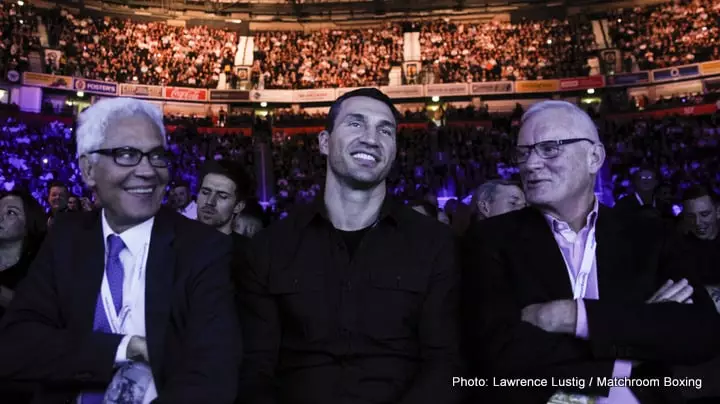Wladimir Klitschko, a name synonymous with heavyweight boxing dominance, is under the spotlight once again, as rumors swirl about a possible return to the ring at age 48—soon to be 49. This talk has been fueled by Turki Alalshikh, a prominent Saudi businessman with grand aspirations for boxing, suggesting that Klitschko could face current champions like Oleksandr Usyk or Tyson Fury. The prospect of the “Dr. Steel Hammer” attempting to break George Foreman’s record as the oldest heavyweight champion could not only reignite interest in Klitschko but also reshape the landscape of heavyweight boxing.
Klitschko’s previous reign was characterized by skill, power, and a dominating presence that few could rival. His last bout in April 2017 ended in a stoppage loss against Anthony Joshua—signifying a significant turning point in his illustrious career. However, it was the two prior defeats, one against Tyson Fury and another against Joshua, that marked the end of an era for the heavyweight division. Klitschko’s professional record stands at an impressive 64-5, but what does it mean for an aging warrior to step back into the arena after so long? The allure of attempting to reclaim his status, along with the possibility of seizing a piece of boxing history, presents a tantalizing narrative.
However, as romantic as the idea of a comeback may be, it is shrouded in risks. The harrowing truth is that returning to the ring after nearly eight years is fraught with potential dangers, particularly for athletes in their late forties. While Klitschko may have maintained his fitness, the intense pressure and strain of a high-stakes bout against current top fighters like Usyk or Fury, without a preparatory “tune-up” fight, poses significant physical risks. The sport of boxing inherently carries dangers, and facing younger, more active competitors could result in severe consequences, both physically and emotionally.
Turki Alalshikh’s motivations are also worth contemplating. His financial clout could incentivize Klitschko’s return, and one must question how much he is willing to invest to see this dream realized. The dynamics behind financial backing often heavily influence athletes’ decisions—particularly those late in their careers. Media speculation about the potential financial rewards may blind some to the harsh realities of stepping into the ring against formidable opponents—a fact that Klitschko must weigh carefully.
The tantalizing question remains: Should Klitschko capitalize on this opportunity to chase history, or is it an endeavor fraught with danger? Foreman’s legacy as the oldest heavyweight champion after defeating Michael Moorer at age 45 remains a legendary tale in sports history. Would Klitschko’s attempt to break this record generate the same reverence, or would it simply serve as a cautionary tale? Only time will tell if he decides to lace up the gloves once more, yet fans and pundits alike will be holding their breath, waiting for what could be an extraordinary chapter in boxing history. While Wladimir Klitschko has much to think about, one thing is certain: a possible return would redefine not just his legacy, but perhaps the future of heavyweight boxing itself.

